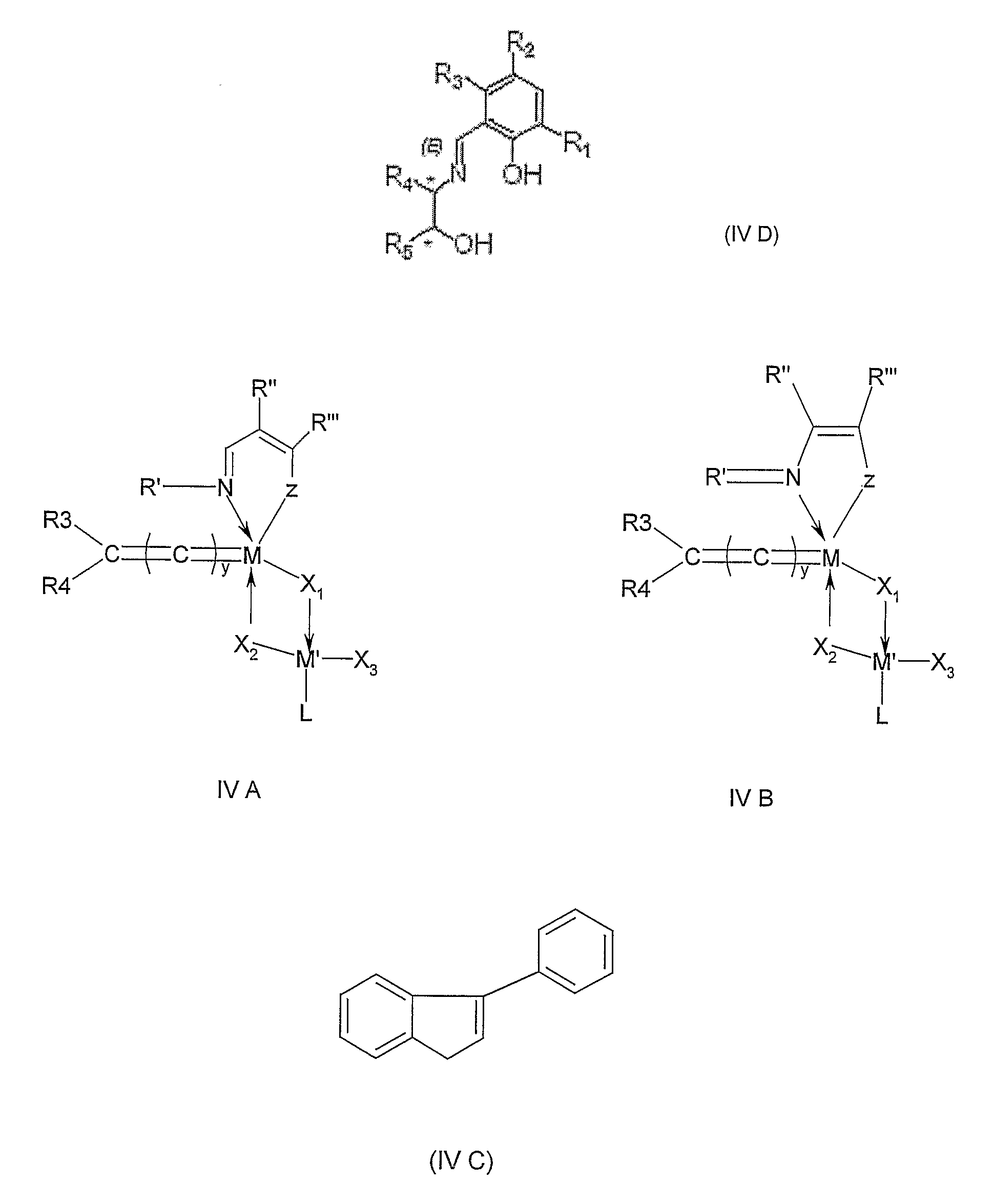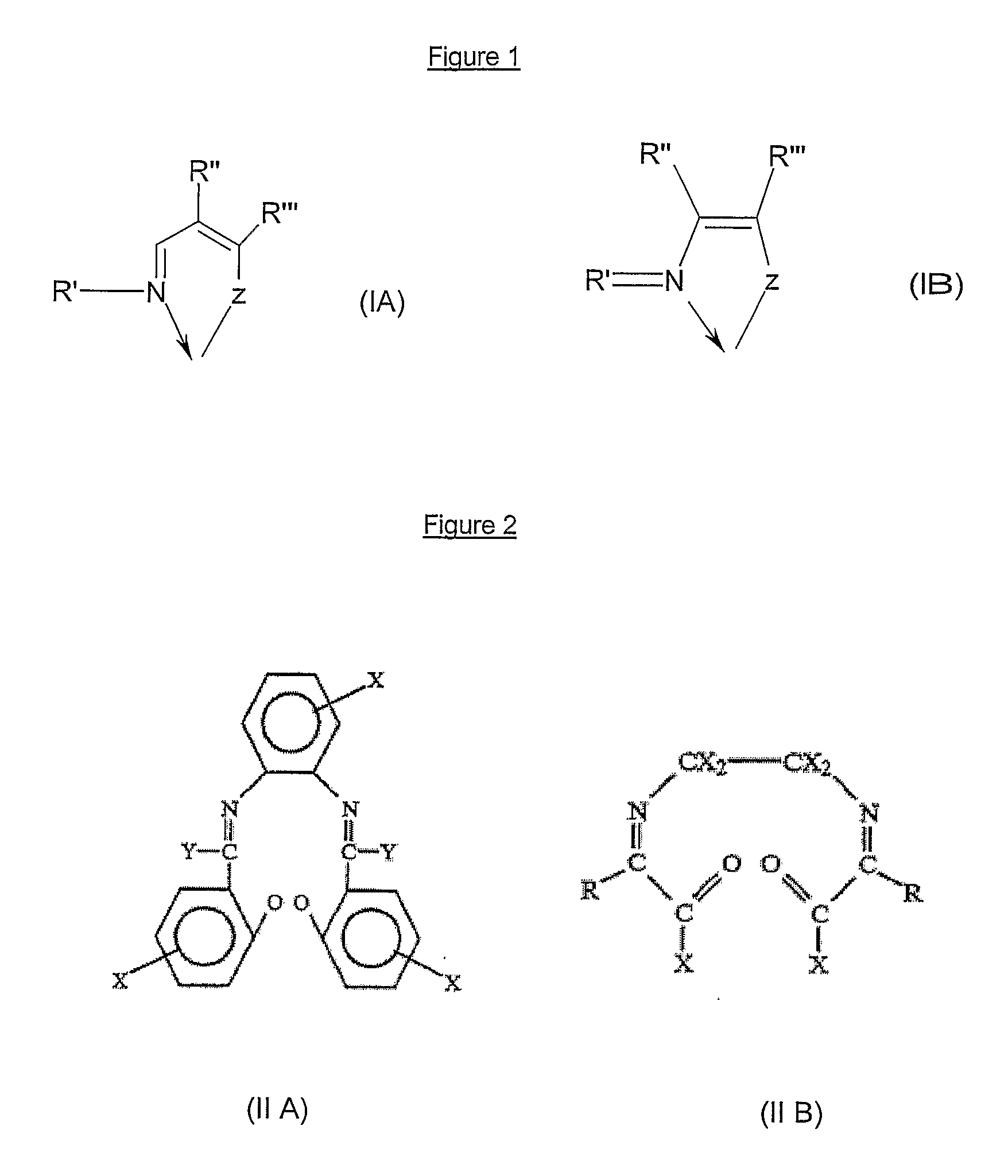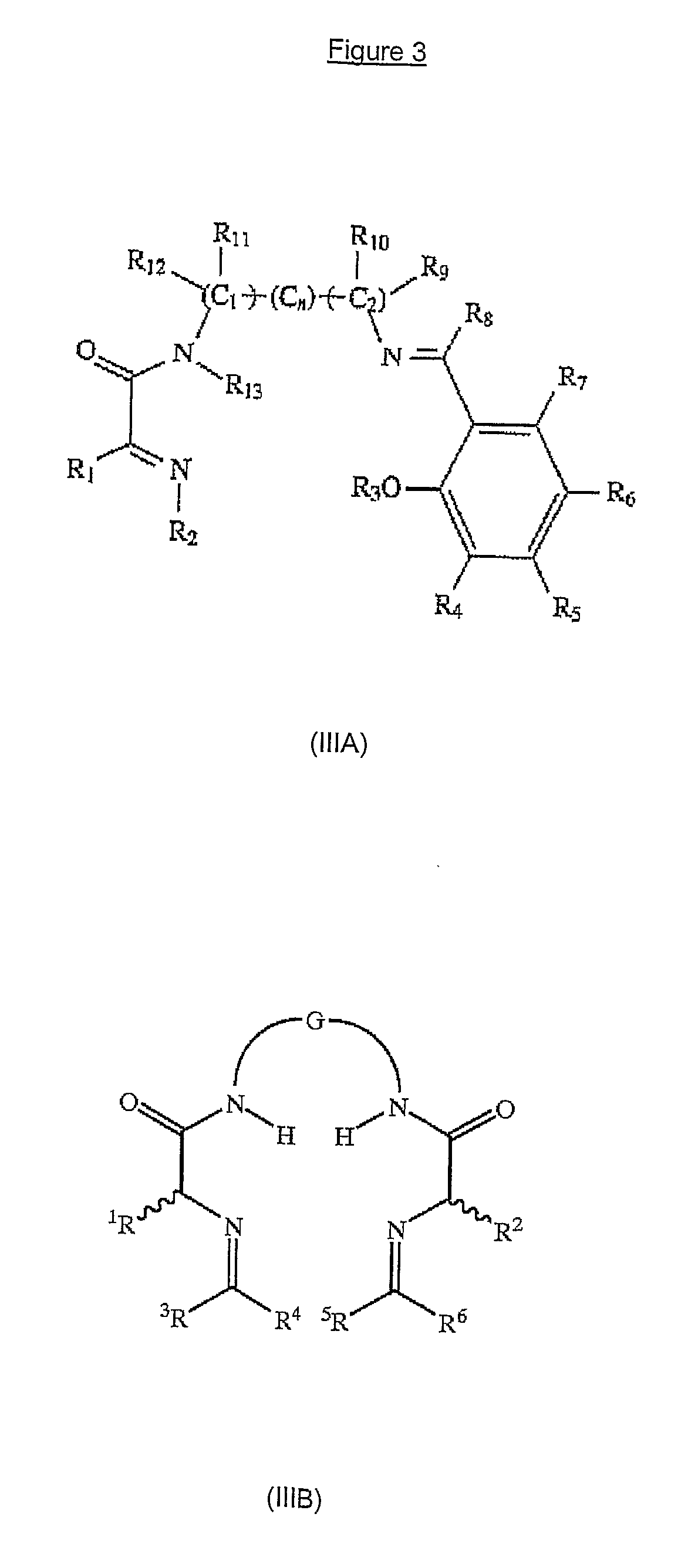Metal complexes for use in olefin metathesis and atom group transfer reactions
a technology of olefin metathesis and atom group transfer, which is applied in the direction of group 5/15 element organic compounds, antimony organic compounds, ruthenium organic compounds, etc., can solve the problems of high polydispersity, ill-controlled molecular weight of polymers, and limited industrial application
- Summary
- Abstract
- Description
- Claims
- Application Information
AI Technical Summary
Benefits of technology
Problems solved by technology
Method used
Image
Examples
examples 1-a to 1-e
Preparation of Schiff Base Ligands
[0401] Schiff base ligands were prepared and purified as follows. Condensation of a salicylaldehyde (10 mmole) with a suitably substituted aniline was carried out with stirring in 40 ml methanol at reflux temperature during 4 hours. After cooling at −18° C. for 24 hours, the crystals formed were filtered and washed with cold ethanol, then dried in vacuo at 40° C. during 4 hours to afford with the following yields the desired salicylaldimine ligands. Each ligand (formula given hereunder) was characterized by means of proton nuclear magnetic resonance (hereinafter referred as NMR, performed at 300 MHz with C6D6 at 25° C.), carbon NMR (performed at 75 MHz with C6D6) and infrared spectrophotometry (IR, performed with CCl4), as follows:
N-(2,6-diisopropylphenyl)-2-hydroxy-3-tertbutyl-1-phenylmethaneimine (Schiff base 1-A) obtained (yellow-orange oil, 2.9 g, yield 87%) from 1.71 ml 3-tert-butyl-2-hydroxy-benzaldehyde and 1.88 ml 2,6-diisopropylaniline
[0...
examples 2 to 8
Preparation of Schiff Base Substituted ruthenium Complexes
[0412] Ruthenium complexes with Schiff bases from examples 1-A to 1-E were prepared in three steps and purified as follows. In a first step, to a solution in THF (15 ml) of the appropriate Schiff base (3 mmole), a solution of thallium ethoxide in THF (5 ml) was added dropwise at room temperature. Immediately after addition, a pale yellow solid was formed and the reaction mixture was stirred for 2 hours at 20° C.
[0413] To a solution of the said salicylaldimine thallium salt in THF (5 ml) was added a solution of [RuCl2(p-cymene)]2 in THF (5 ml), then the reaction mixture was stirred at room temperature (20° C.) for 6 hours. The thallium chloride by-product was removed via filtration. After evaporation of the solvent, the residue was recrystallized at 0° C. from a dichloromethane / pentane mixture. The resulting product was then dissolved in dry ether (15 ml) and cooled down to 0° C.
[0414] In a third and last step, to the said ...
example 2 (
Obtained from Schiff Base 1-C and methyllithium)
[0415]
[0416]1H-NMR: 9.81 (s, 1H), 7.10-6.80 (m, 6 H), 1.33 (s, 6H); 5.48 (d, 1H), 5.34 (d, 1H), 4.48 (d, 1H), 4.36 (d, 1H), 2.90 (sept, 1H), 2.16 (s, 3H), 1.26 (d, 6H) and 0.10 (s, 3H) ppm; IR (KBr) 3051, 2957, 2923, 2853, 1920, 1670, 1596, 1564, 1516, 1462, 1447, 1372, 758 cm−1
PUM
| Property | Measurement | Unit |
|---|---|---|
| molar ratio | aaaaa | aaaaa |
| contact time | aaaaa | aaaaa |
| optical purity | aaaaa | aaaaa |
Abstract
Description
Claims
Application Information
 Login to View More
Login to View More - R&D
- Intellectual Property
- Life Sciences
- Materials
- Tech Scout
- Unparalleled Data Quality
- Higher Quality Content
- 60% Fewer Hallucinations
Browse by: Latest US Patents, China's latest patents, Technical Efficacy Thesaurus, Application Domain, Technology Topic, Popular Technical Reports.
© 2025 PatSnap. All rights reserved.Legal|Privacy policy|Modern Slavery Act Transparency Statement|Sitemap|About US| Contact US: help@patsnap.com



